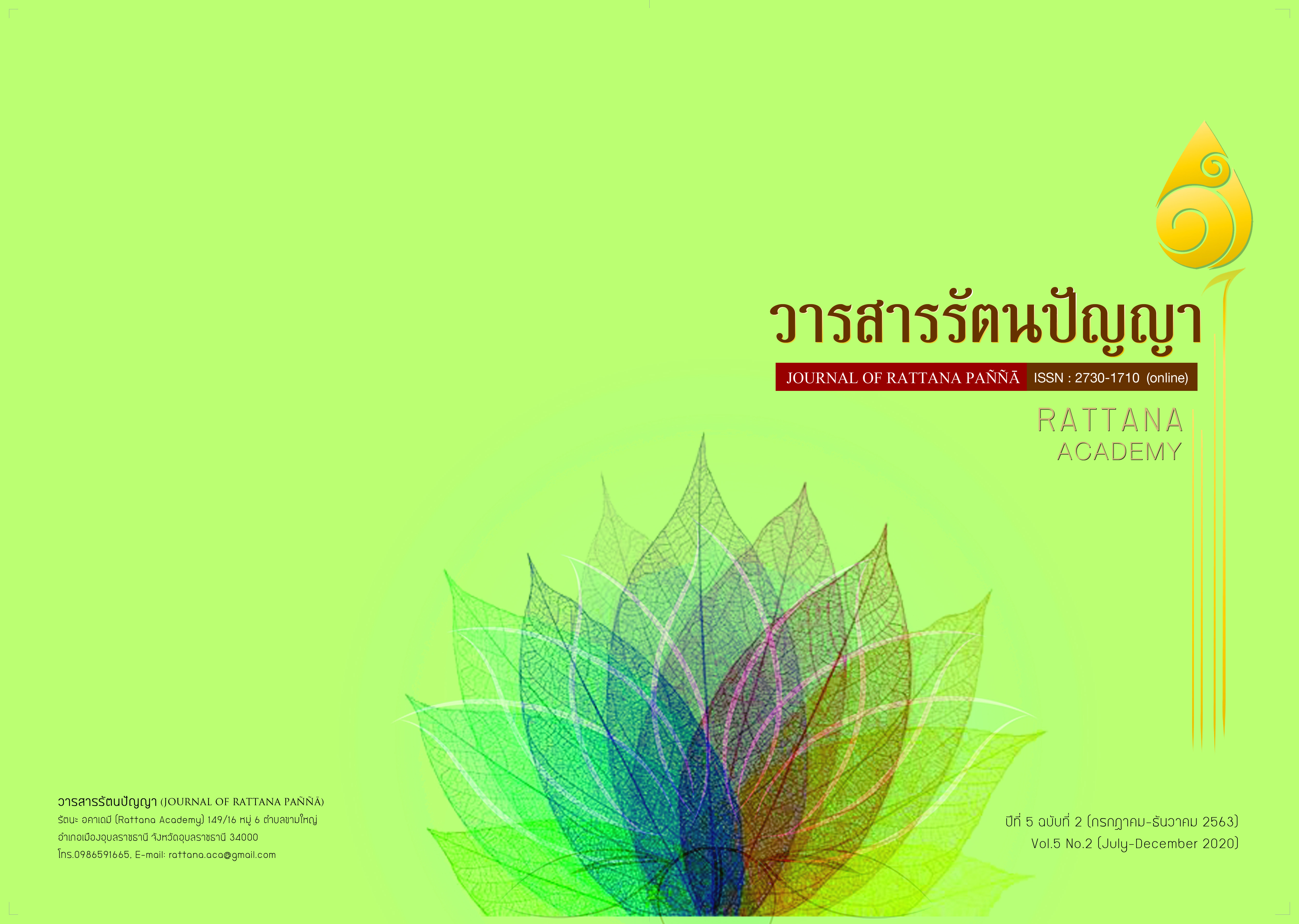Study of Heat Twelve Traditions to Make Harmony in the Community of Chik Village, Kusakon Sub-District, Trakan Phuet Phon District, Ubon Ratchathani Province
Main Article Content
Abstract
The purposes of this research were to study the heat twelve traditions to make harmony in the community of Chik village, Kusakon sub-district, Trakan Phuet Phon district, Ubon Ratchathani province, 1) To study the way of life and the heat twelve traditions to make harmony in the community 2) To analyse the value, definition and system relationship of tradition to unity in the heat twelve traditions, 3) To offer a guideline to the reconstruction of the heat twelve traditions to create the unity of people within the community. This study uses the community involvement process, participant collecting the data, indepth interviews and group interview. The target group for interviewing in this study were the abbot of Munmajlis temple, the members of sub-district administrative organization, the leaders of the villages, Philosophers, youth and people.In this study, the researchers chose to use the Anthropological Methods of anthropology by qualitative research techniques by using the relevant theoretical concept, it consists of a theoretical structure of popular functions. The scientific and religious theories and ecological theory of research results were as follows:
- The way of life and the heat twelve traditions of Chik village found that in the past, the way of living in Chik village is separated from the Srisuk village to settle and using the 12 month tradition (the heat twelve traditions) is the main way to build a community that is a harmonious community.
- The meaning and system relationship of tradition and unity found that from the past to the present tradition, the heat twelve traditions still has a significant emphasis on the way of life for the people in the community, still held 12 months of tradition. However, some traditions have different practices.
- The guidelines for the restoration of the heat twelve traditions found that the major causes of the relationship system showed that the factors that resulted in the tradition of the 12 and harmonious decline were lost were follows
- The growth began in the Community development era of the state unit.
- More technological demands than natural needs
- Access to technology developed on both a TV, a computer phone makes the villagers in the community interested in media.
- Higher education results in a traditional faith belief, the way the restoration, tradition, and harmony are restored as follows:
- Recover a relative system Encourage the community to track the relatives from the past to the present day to regain the relationship 2. Let the school promote learning about the traditions of each month to the students in the community.
Article Details
References
ทวีศักดิ์ เยี่ยมเจริญและคณะ. (2553). โครงการประเพณีฮีตสิบสองคองสิบสี่เพื่อสร้างความ
สามัคคีประชาชนหมู่ที่ 12 ตำบลนาคู อำเภอนาคู จังหวัดกาฬสินธุ์. กรุงเทพฯ :
สำนักงานกองทุนสนับสนุนการวิจัย.
นพดล พรามณี. (2556). การเปลี่ยนแปลงวิถีชีวิตของหมู่บ้านชำโสม ตำบลกบินทร์ อำเภอ
กบินทร์บุรี จังหวัดปราจีนบุรี กรณีศึกษาประเพณีฮีต 12 คอง 14.
วิทยานิพนธ์ปริญญารัฐศาสตรมหาบัณฑิต สาขาวิชาการจัดการทรัพยากรเพื่อความ
มั่นคง , มหาวิทยาลัยบูรพา.
บุญเกิด พิมพ์วรเมธากุล. (2544). ประเพณีอีสานและเกร็ดโบราณคดีไทอีสาน. ขอนแก่น :
คลังนานาวิทยา.
พระธรรมปิฎก (ป.อ. ปยุตฺโต). (2543). พุทธธรรม. (พิมพ์ครั้งที่ 9). กรุงเทพฯ :
มหาจุฬาลงกรณราชวิทยาลัย.
พระสุขี ชาครธมฺโม (ศรมาตย์). (2553). ศึกษาวิเคราะห์การเปลี่ยนแปลงของประเพณี
ฮีตสิบสอง : ศึกษากรณีตําบลเมืองเก่า อําเภอเมืองจังหวัดขอนแก่น.
วิทยานิพนธ์ปริญญาพุทธศาสตรมหาบัณฑิต สาขาวิชาพระพุทธศาสนา
มหาวิทยาลัยมหาจุฬาลงกรณราชวิทยาลัย , กรุงเทพ.
อุดม บัวศรี. (2546). วัฒนธรรมอีสาน. ขอนแก่น : คลังนานาวิทยา.
สุนทร เจริญท้าว. (2561, พฤศจิกายน 11). ผู้ใหญ่บ้านบ้านจิก. สัมภาษณ์.


